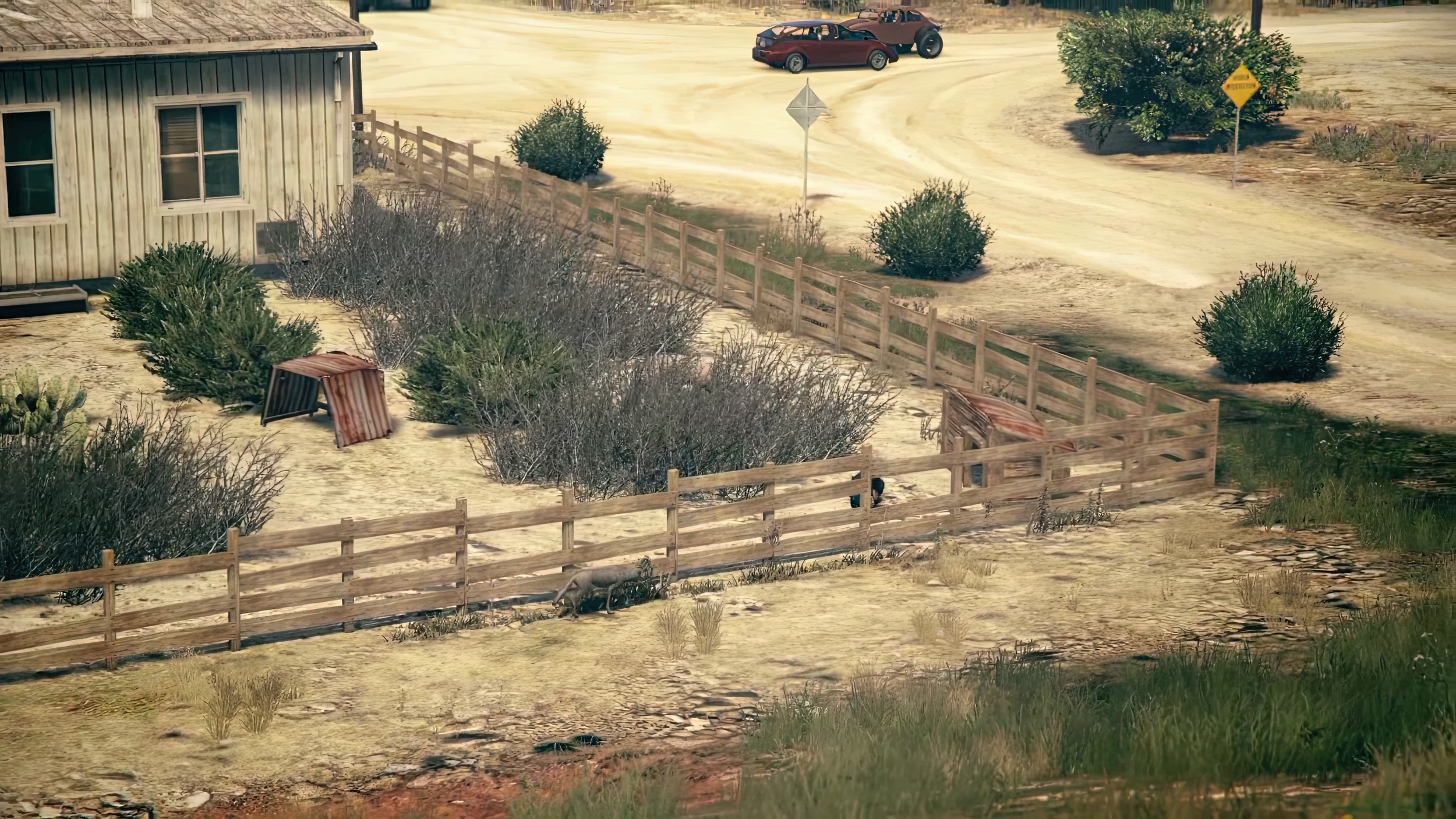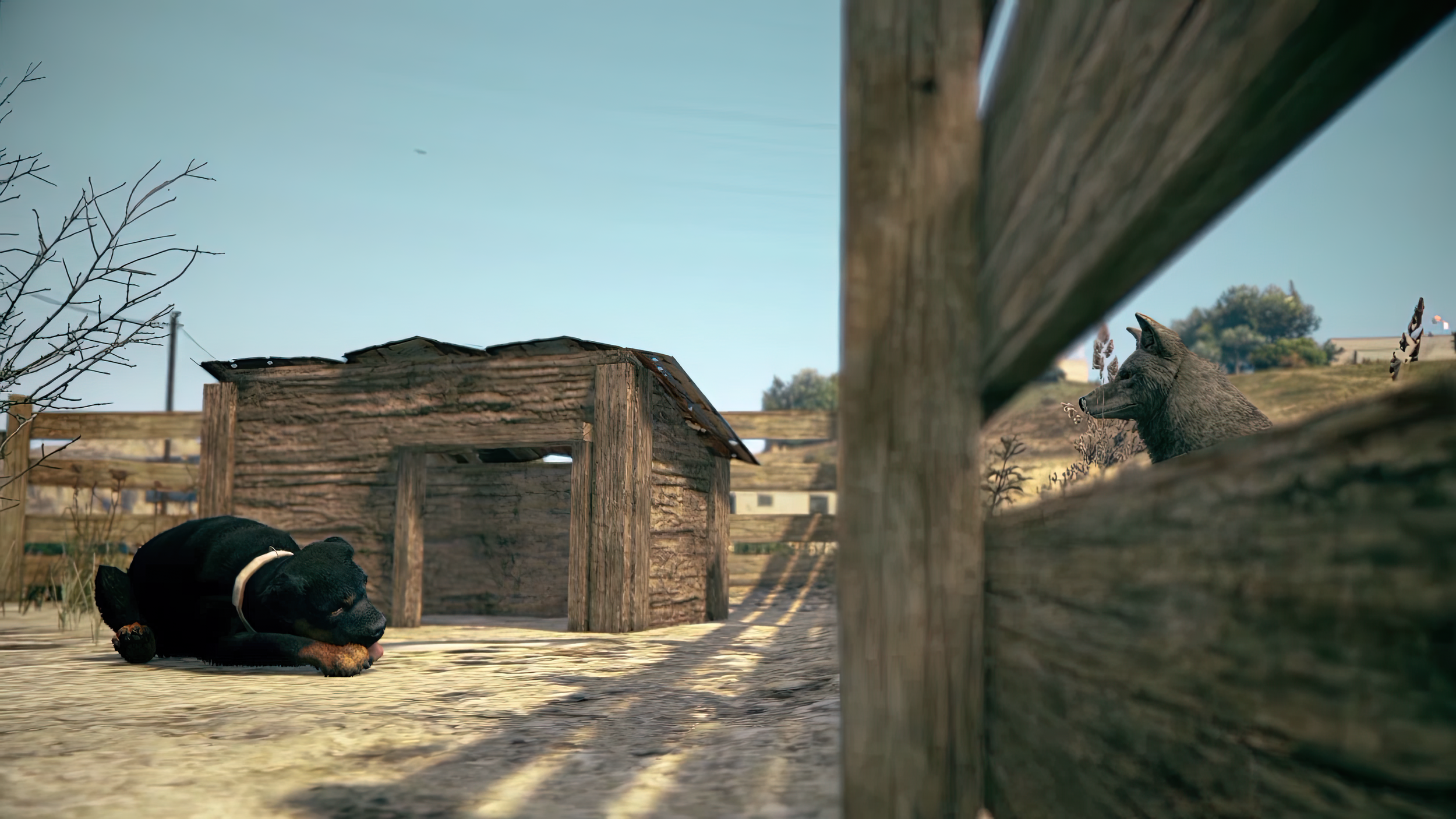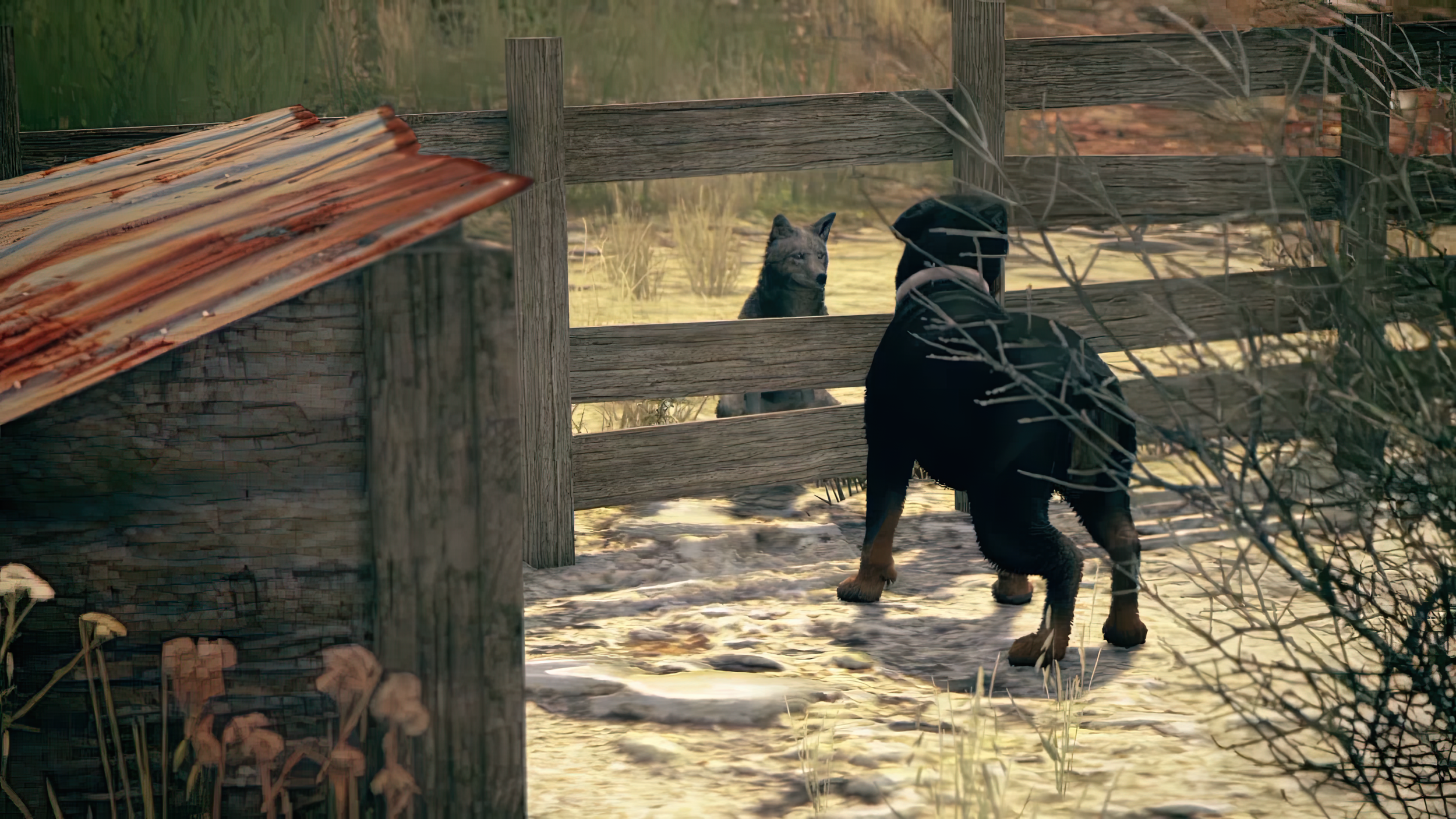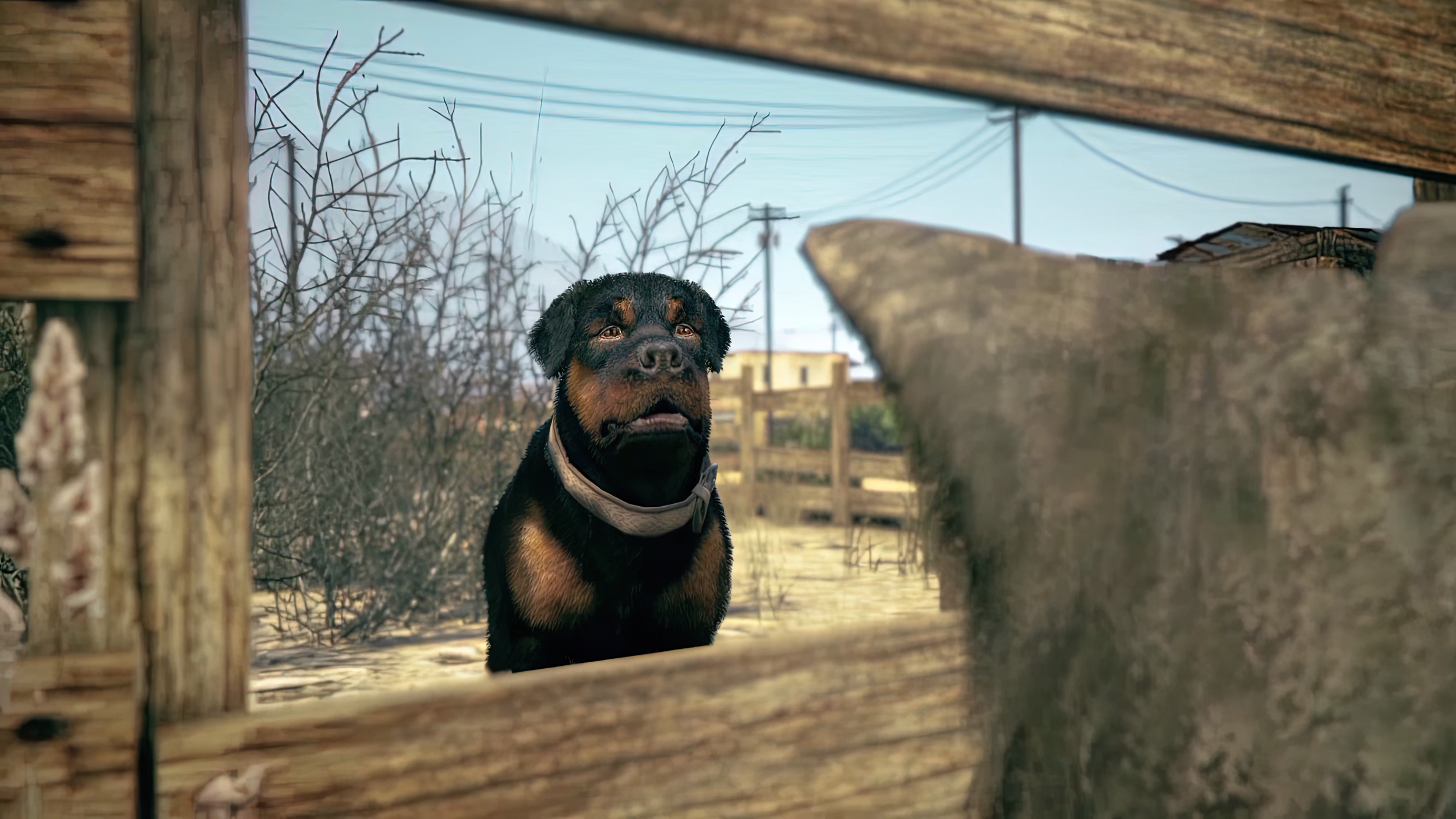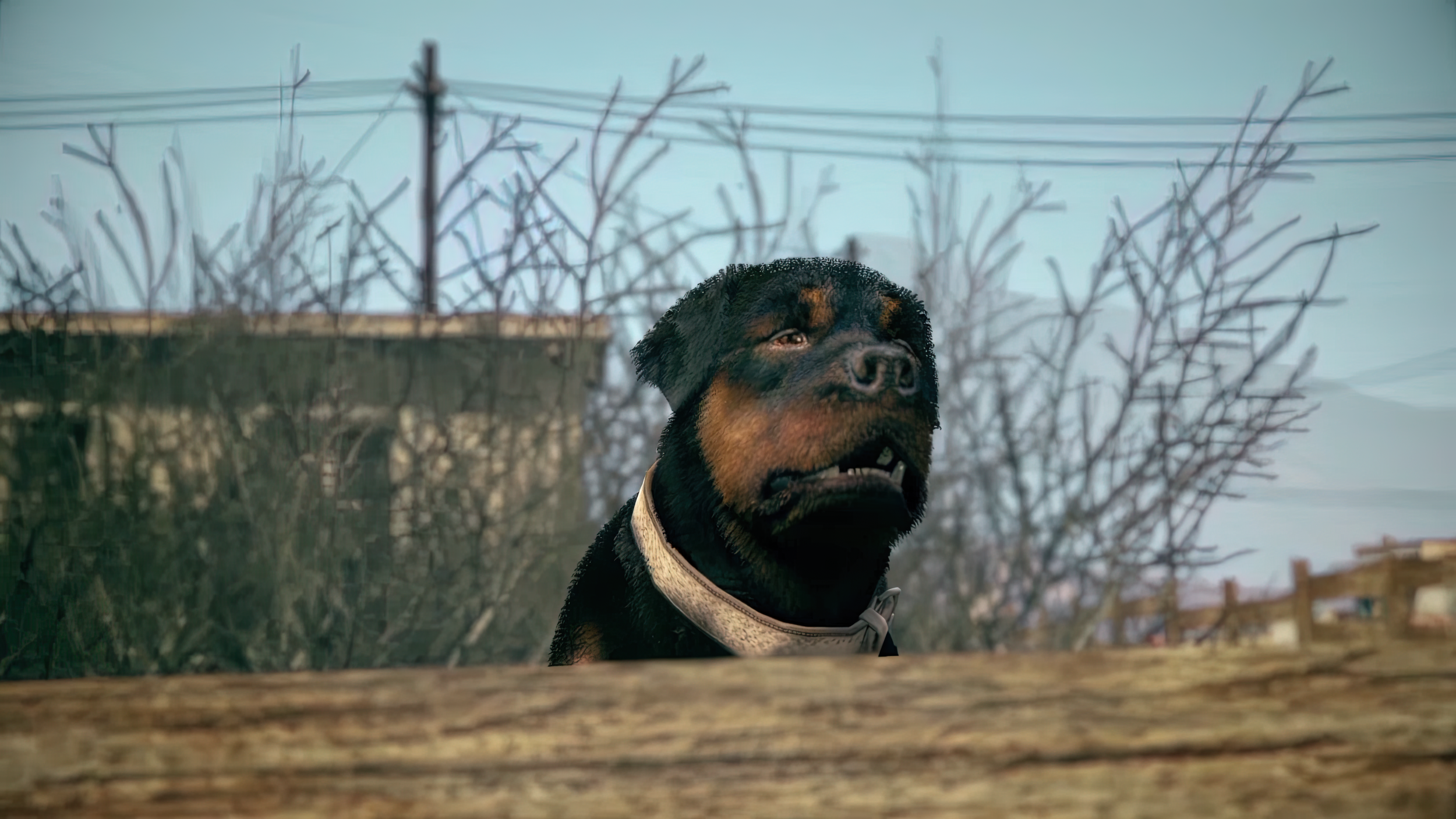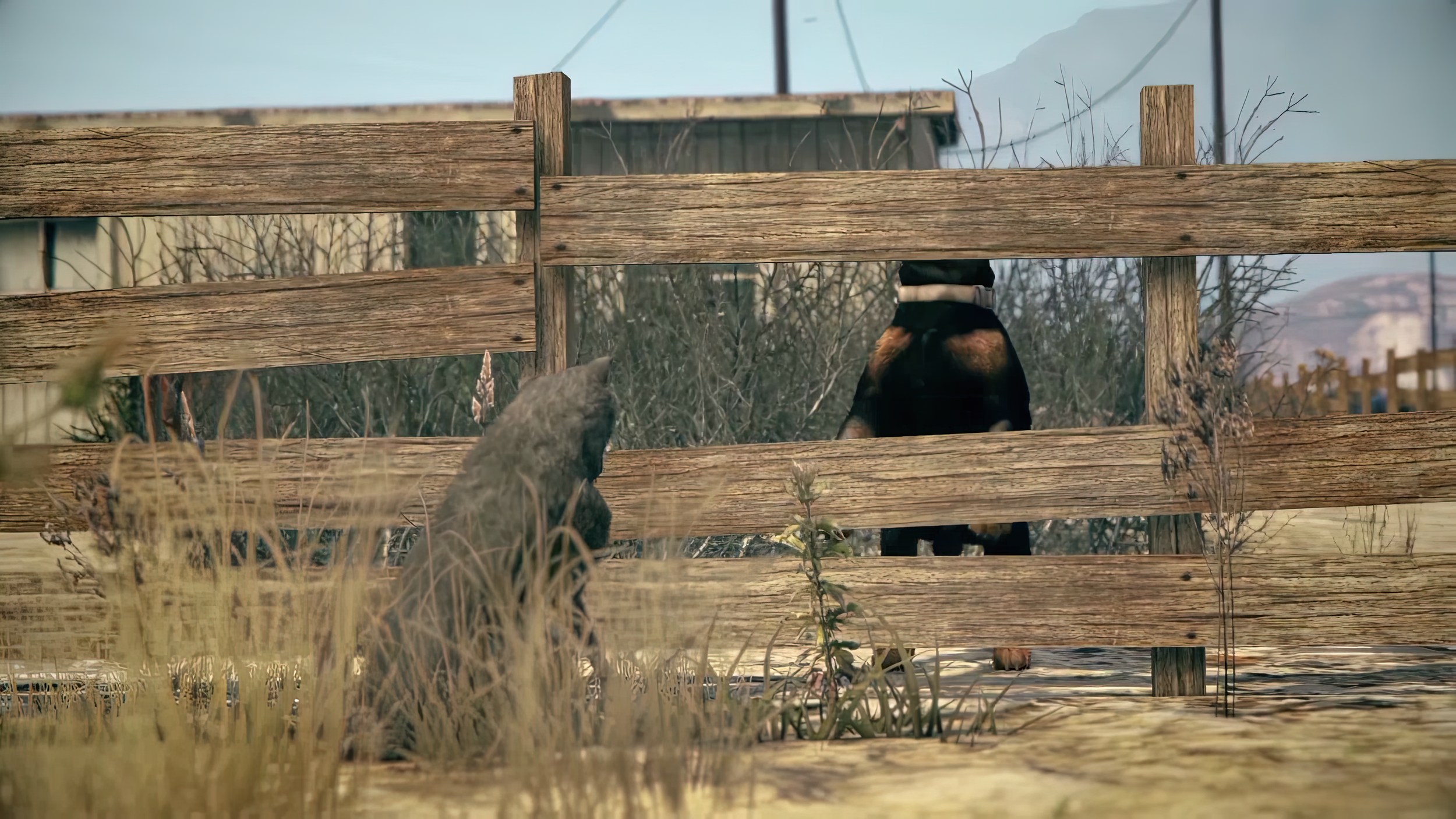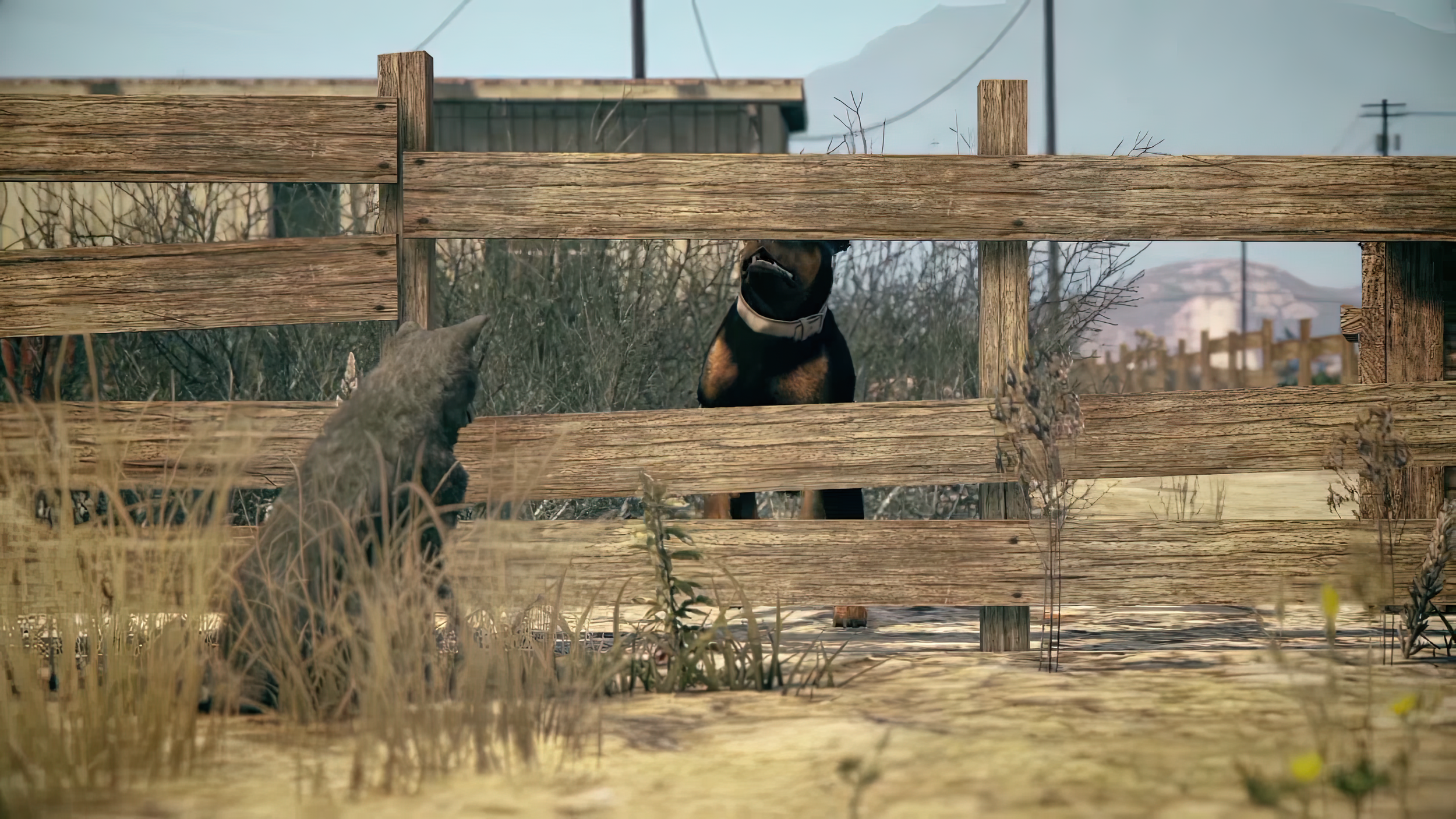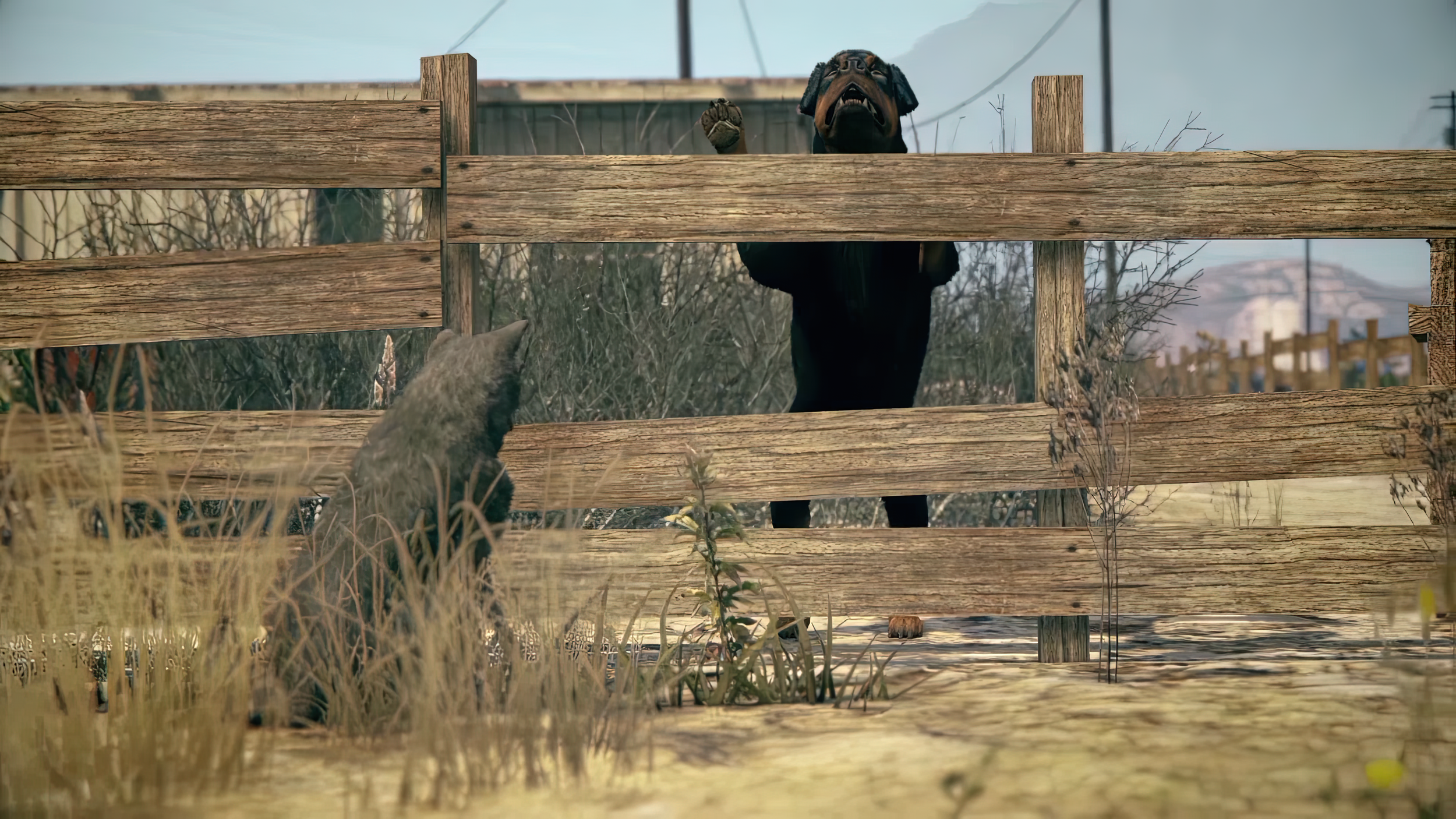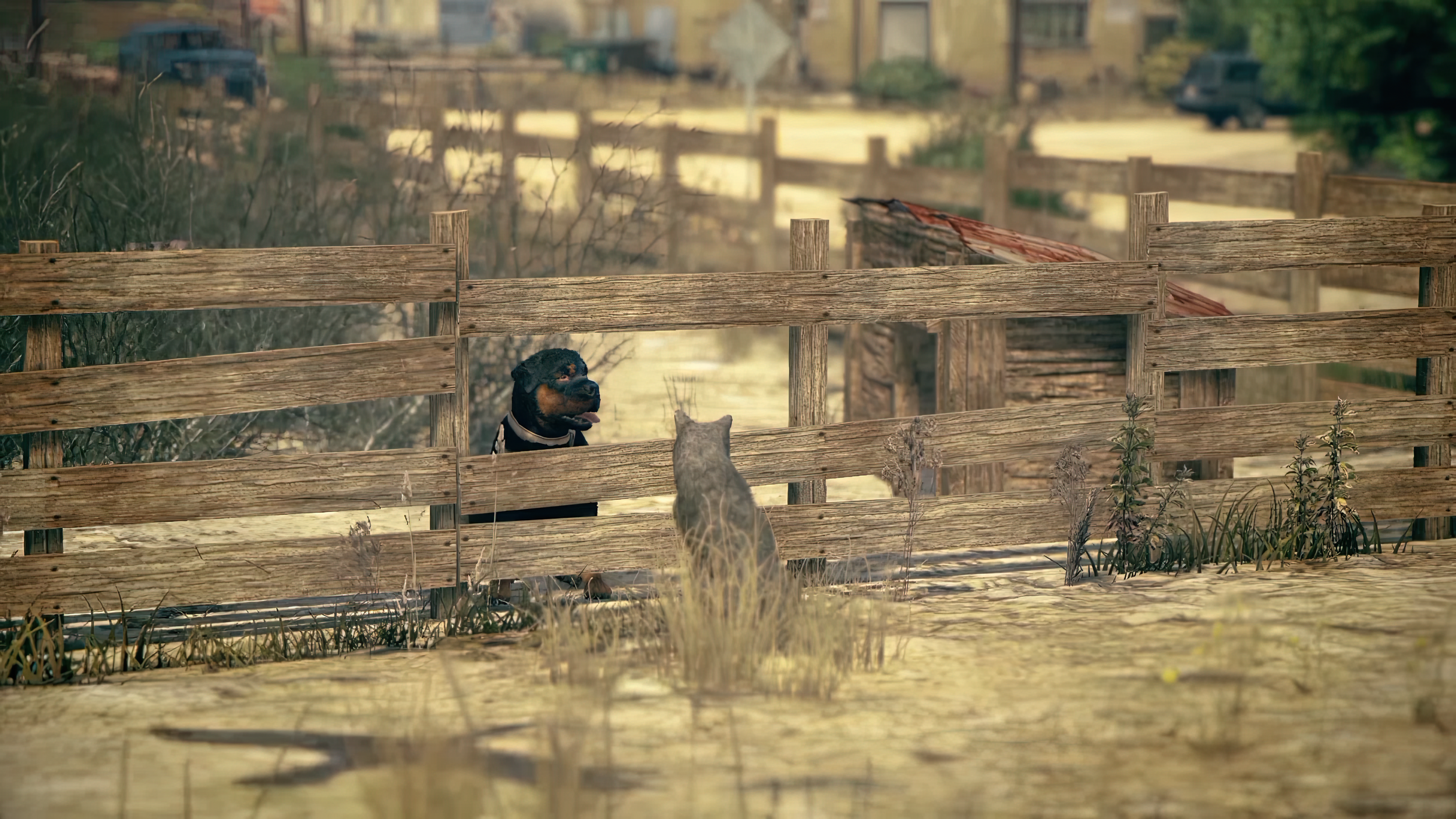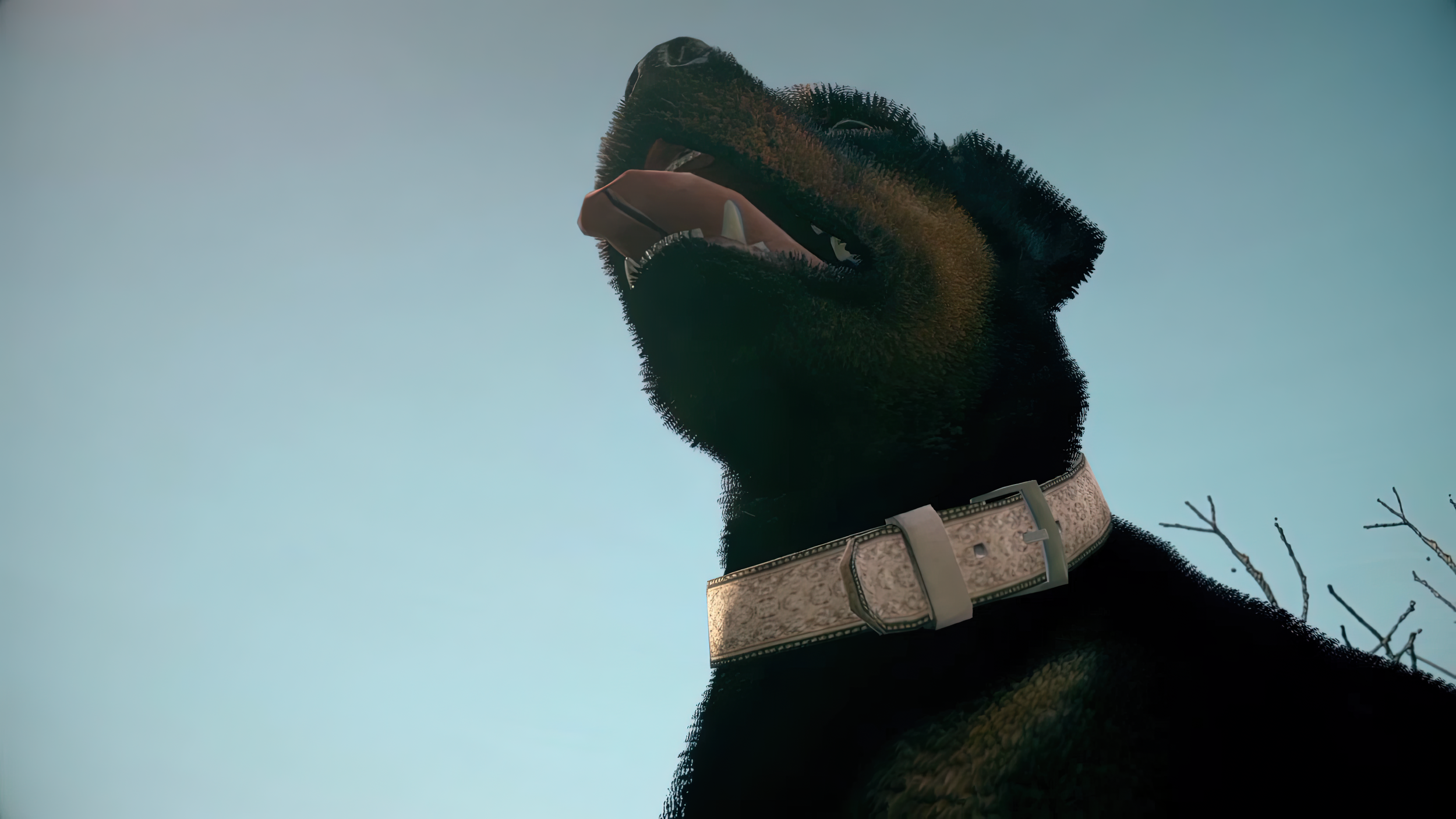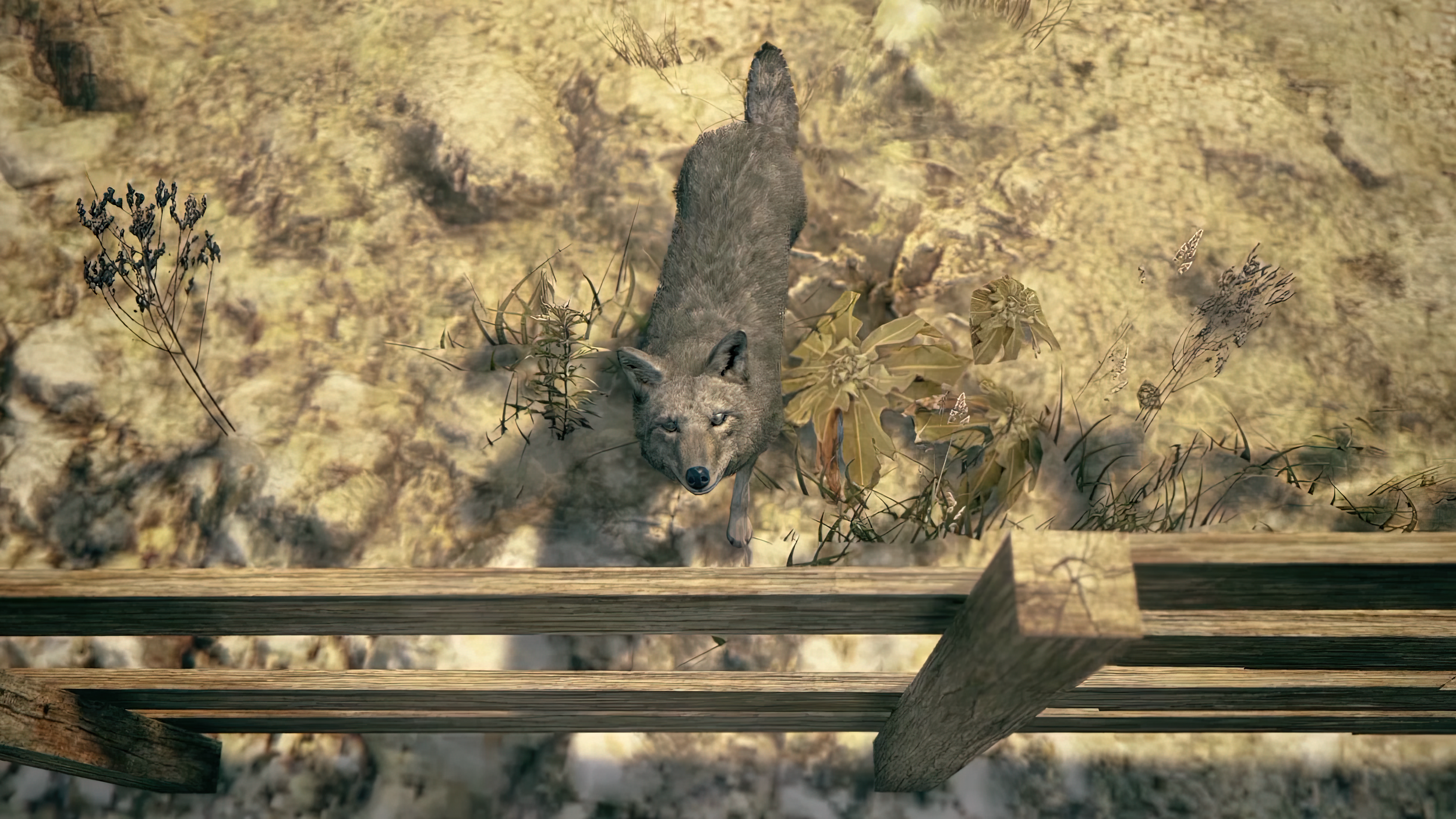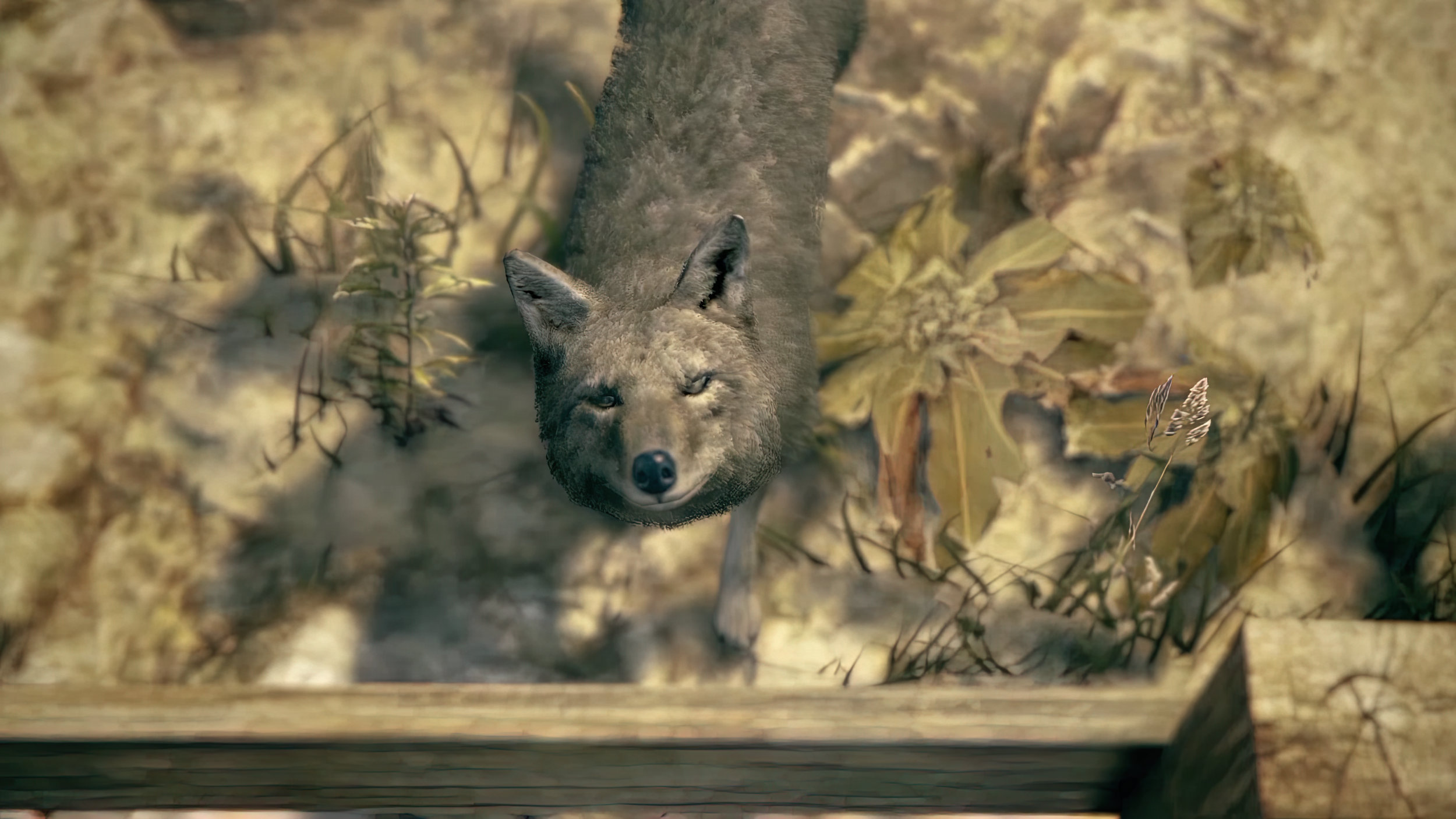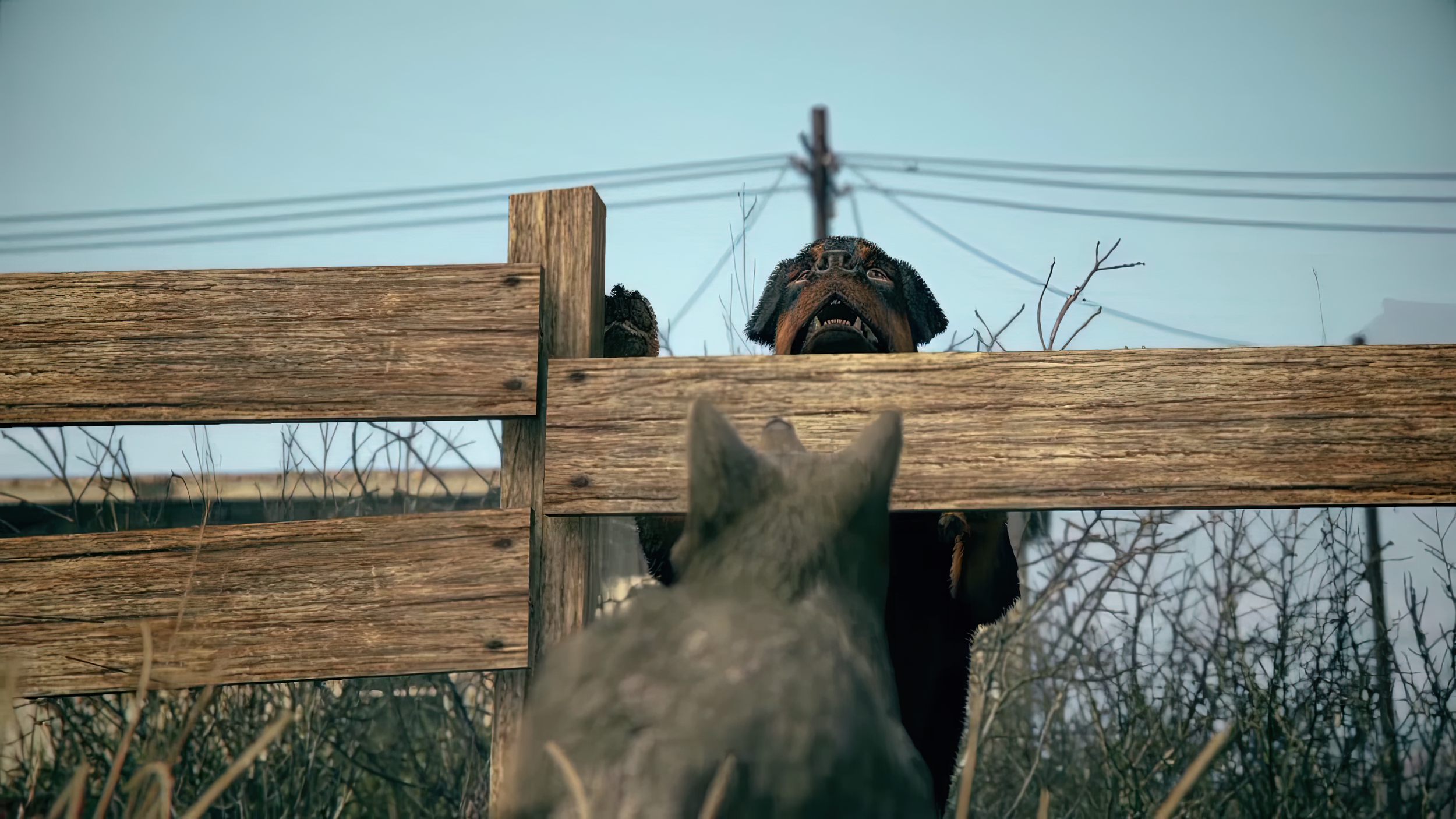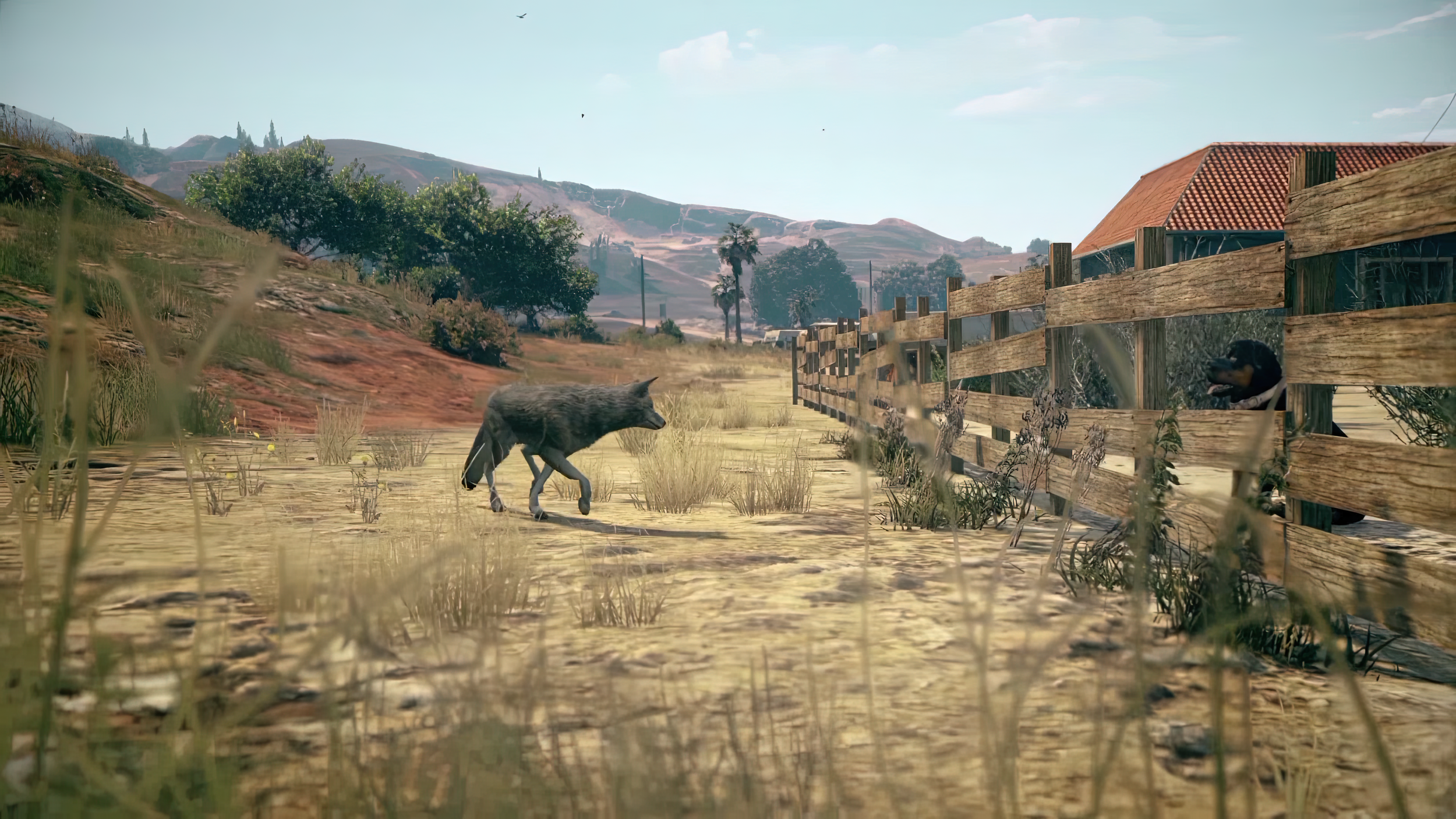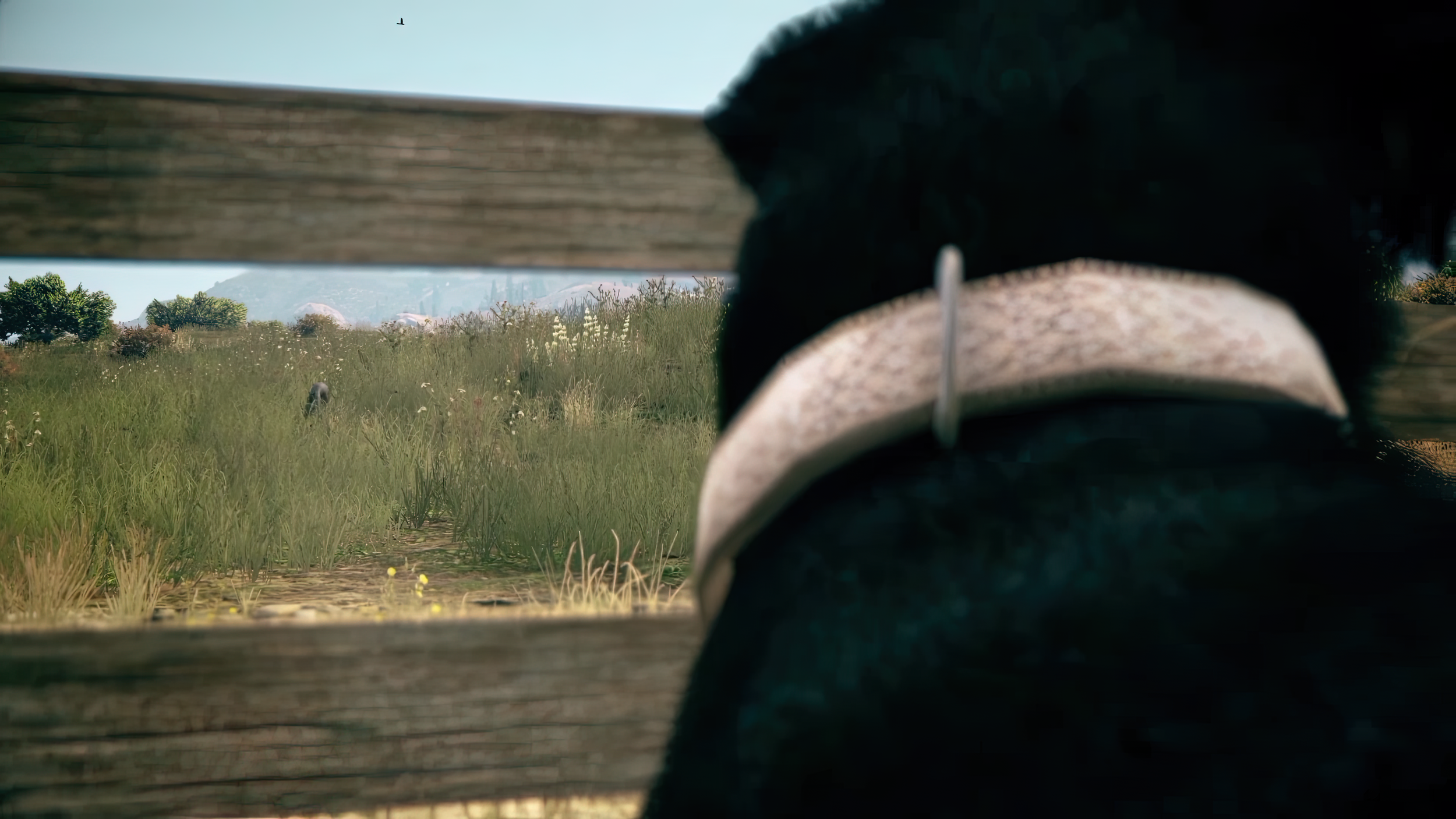CRIS UBERMANN
BAD TALES
MARCH 21-27 2022/21-27 MARZO 2022 (ONLINE)
Introduced by/Introdotto da Matteo Bittanti
LE LOUP ET LE CHIEN
machinima/digital video, color, sound, 4’ 04”, 2021, France
“Il lupo e il cane” (Le loup et le chien) è la quinta favola del primo libro delle Favole (1668) dell’autore francese Jean de La Fontaine. Un lupo affamato chiede a un cane ben nutrito come conseguire un analogo livello di comfort. Il cane gli suggerisce di mettersi al servizio di un essere umano: così facendo, verrà ricompensato per i suoi servigi. Ma il lupo si accorge che il cane ha una ferita dove il suo padrone gli ha messo un collare. Quando scopre che la ferita è causata dall’oggetto che lo priva della sua libertà — un guinzaglio — decide di rinunciare alla proposta e tornare nel bosco. Questa favola contrappone due animali simili a livello di morfologia ma con stili di vita diversi: uno è selvaggio mentre l’altro è domestico. Il confronto permette a de La Fontaine di confrontare due condizioni: l’insicurezza legata alla libertà e il comfort derivante dalla servitù. L’artista ha ricreato questa parabola attraverso un uso sapiente del videogioco Grand Theft Auto V.
“The Wolf and the Dog” (Le loup et le chien) is the fifth fable in the first book of Fables (1668) by French author Jean de La Fontaine. In this popular tale, a hungry wolf asks a well-fed dog what he should do to improve his condition. The dog advises him to serve a human being so that he will be rewarded for his services. However, the wolf notices that the dog has a wound around his collar. When he realizes that such wound is caused by the very object that deprives him of his freedom — a leash — he decides to hold on tightly to his lifestyle and hastily returns to the woods. This fable contrasts two animals that are similar in morphology but have two different lifestyles: one is wild and the other is domesticated. This comparison allows de La Fontaine to describe two conditions: the insecurity associated with freedom and the comfort associated with servitude. The filmmaker recreated this parable through a skillful use of the video game Grand Theft Auto V.
L’ARTISTA
THE ARTIST
Artista e regista francese, Cris Ubermann produce cortometraggi sperimentali sin dagli anni Novanta. Il desiderio di cimentarsi con un il cinema è stato stimolato dal suo approfondito studio sulla psicoanalisi e sulla filosofia, che lo ha portato a soppesare l’impatto delle “immagini in movimento” sull’inconscio. Negli ultimi anni, Ubermann ha creato una serie di innovativi machinima attraverso l’appropriazione e manipolazione di Grand Theft Auto V.
French artist and filmmaker, Cris Ubermann began making experimental short films in the 1990. His urge to work with a time-based medium was triggered by an extensive study of psychoanalysis and philosophy, which led him to discover and pursue the powerful impact of moving images on human subconsciousness. In the past few years, Ubermann has created groundbreaking machinima by appropriating and repurposing Grand Theft Auto V.
TRANSCRIPTION
Un Loup n'avait que les os et la peau,
Tant les chiens faisaient bonne garde.
[Ce Loup rencontre un Dogue aussi puissant que beau,
Gras, poli, qui s'était fourvoyé par mégarde.]
L'attaquer, le mettre en quartiers,
Sire Loup l'eût fait volontiers;
Mais il fallait livrer bataille,
Et le Mâtin était de taille
À se défendre hardiment.
Le Loup donc l'aborde humblement,
Entre en propos, et lui fait compliment
Sur son embonpoint, qu'il admire.
«Il ne tiendra qu'à vous beau sire,
D'être aussi gras que moi, lui repartit le Chien.
Quittez les bois, vous ferez bien:
Vos pareils y sont misérables,
Cancres, hères, et pauvres diables,
Dont la condition est de mourir de faim.
Car quoi? rien d'assuré: point de franche lippée;
Tout à la pointe de l'épée.
Suivez-moi: vous aurez un bien meilleur destin.»
Le Loup reprit: « Que me faudra-t-il faire?
– Presque rien, [dit le Chien], donner la chasse aux gens
Portants bâtons, et mendiants;
Flatter ceux du logis, à son Maître complaire:
Moyennant quoi votre salaire
Sera force reliefs de toutes les façons:
Os de poulets, os de pigeons,
Sans parler de mainte caresse.»
Le Loup déjà se forge une félicité
Qui le fait pleurer de tendresse.
Chemin faisant, il vit le col du Chien pelé.
«Qu'est-ce là? lui dit-il. – Rien. – Quoi rien? – Peu de chose.
– Mais encore? – Le collier dont je suis attaché
De ce que vous voyez est peut-être la cause.
– Attaché? dit le Loup : vous ne courez donc pas
Où vous voulez? – Pas toujours ; mais qu'importe?
– Il importe si bien, que de tous vos repas
Je ne veux en aucune sorte,
Et ne voudrais pas même à ce prix un trésor.»
Cela dit, maître Loup s'enfuit, et court encor.
TRANSCRIPTION
A prowling wolf, whose shaggy skin
(So strict the watch of dogs had been)
Hid little but his bones,
[Once met a mastiff dog astray.
A prouder, fatter, sleeker TrayNo human mortal owns].Sir Wolf, in famished plight,Would fain have made a rationUpon his fat relation:
But then he first must fight;
And well the dog seemed able
To save from wolfish table
His carcass snug and tight.
So then in civil conversation
The wolf expressed his admiration
Of Tray’s fine case. [Said Tray politely],
“Yourself, good sir, may be as sightly;
Quit but the woods, advised by me:
For all your fellows here, I see,
Are shabby wretches, lean and gaunt,
Belike to die of haggard want.
With such a pack, of course it follows,
One fights for every bit he swallows.
Come then with me, and share
On equal terms our princely fare.”
“But what with you
Has one to do?”
Inquires the wolf. “Light work indeed,”
Replies the dog: “you only need
To bark a little now and then,
To chase off duns and beggar-men,
To fawn on friends that come or go forth,
Your master please, and so forth;For which you have to eat
All sorts of well-cooked meat—
Cold pullets, pigeons, savory messes—
Besides unnumbered fond caresses.”
The wolf, by force of appetite,
Accepts the terms outright,
Tears glistened in his eyes;
But faring on, he spies
A galled spot on the mastiff’s neck.“What’s that?” he cries. “Oh, nothing but a speck.” “A speck?”—“Ay, ay: ’t is not enough to pain me:
Perhaps the collar’s mark by which they chain me.”
“Chain! chain you! What! run you not, then,
Just where you please and when?”
“Not always, sir; but what of that?”
“Enough for me, to spoil your fat!It ought to be a precious price which could to servile chains entice; For me, I’ll shun them while I ’ve wit.”
So ran Sir Wolf, and runneth yet.
TRASCRIZIONE
Un Lupo già ridotto al lumicino
grazie ai cani che stavan sempre all'erta,
andando un dì per una via deserta
incontrava un magnifico mastino,
tanto grasso, tondo e bello,
che pensò di dargli morte
provocandolo in duello.
Ma vedendolo un po’ forte,
pensò invece con ragione
di pigliarlo colle buone.
Comincia in prima a rallegrarsi tanto
di vedere il buon pro’ che gli fa il pane.
“E chi vi toglie, – rispondeva il Cane, -
di fare, se vi accomoda, altrettanto?
Quella vita che voi fate
dentro ai boschi è vita infame
sempre in guerra e sempre in scrupolo
di dover morir di fame:
vita stracciata e senza conclusione
che non può mai contar sopra il boccone.
Venite dietro a me, mio buon compare,
che imparerete l’arte di star bene.
Vi prometto pochissimo da fare;
star di guardia, guardar chi va, chi viene,
abbaiare ai pitocchi ed alla luna
e sbaffare poi certi bocconi
di carne e d’ossa, d’anitre e capponi,
senza contar la broda
in pagamento del menar la coda”
Udendo questo, della sua fortuna
il Lupo si rallegra fino al pianto.
Ma camminando con l'amico accanto
vide spelacchiato e frollo
del buon mastino il collo.
“Che roba è questa?” “È nulla.”
“È nulla un corno! “
“Suvvia non darti pena,
forse il segno sarà della catena
alla quale mi legano di giorno."
“Ti legano? - esclamò cambiando tono. -
Né correre tu puoi dove ti piace?"
“Che importa?”
“Importa a me, colla tua pace;
fossero d'oro, i piatti tuoi ti dono,
non è una vita, no, che m’innamora”
E presa la rincorsa, corre ancora.
INTERVIEW
Matteo Bittanti: You have been working with experimental cinema since the 1990s. What prompted you to adapt Jean de la Fontaine's short story in machinima form?
Cris Ubermann: Le loup et le chien is an allegory of voluntary servitude. The tale poses a simple, yet profound question: Are you a dog or a wolf? For contextual information, I’d recommend The Discourse on Voluntary Servitude, a work attributed to Étienne de La Boétie by Montaigne which was published clandestinely in 1577. More information is available here. It’s hard for me to explain exactly why I decided to turn this tale into a machinima. All I can say is that there are many philosophical and political implications. Most importantly, I strongly believe that today it is essential for a filmmaker to engage with video games, because gaming is the language of the young: it’s their aesthetics. They speak through video games. In order to communicate, today, we cannot ignore video games.
Matteo Bittanti: What prompted you to appropriate and repurpose Grand Theft Auto V to create such a work as Le loup et le chien? Where do video games fit into your broader practice as a filmmaker and artist?
Cris Ubermann: The truth is that most of the video games available on the market use violence as a guideline, as a leitmotif. One of the main goals by working machinima for me was to completely erase any kind of physical violence, to completely eliminate it for the benefit of more beautiful and worthy aspects of mankind. With such a powerful graphic engine, one must reconsider the fields of the possible, to introduce a broader creative horizon, look beyond shooting and killing. As a filmmaker, the world of Grand Theft Auto V provides an incredibly compelling tool, the Rockstar Editor, to create films and using a variety of environments, settings, and characters, which is only expanded by the possibility of modding the original game. Other video games are linked to a specific environment (western, sci-fi, fantasy...), but in Grand Theft Auto V you can create almost any environment you want. It’s an unparalleled narrative matrix.
LE LOUP ET LE CHIEN
machinima/digital video (1920 x 1080), color, sound, 4’ 04”, 2021, France.
Director and Producer: Cris Ubermann
Writer: Jean de La Fontaine
Music: Antropik
Narrator: Lionel Mazari
Made with Grand Theft Auto V


